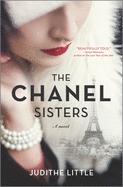
| Publisher: | Graydon House | |
| Genre: | Women, Family Life, World War I, Coming of Age, Fiction, Historical, Siblings | |
| ISBN: | 9781525806384 | |
| Pub Date: | December 2020 | |
| Price: | $28.99 |
| Fiction |
by Judithe Little
Before Coco Chanel became an haute-couture icon, she was simply Gabrielle, one of three sisters left at the convent at Aubazine by their peddler father after their mother's death. Though they learned to sew at the convent, Gabrielle and her sisters chafed against the strictures of their new life, longing to leave and make their own way in the world. In her second novel, The Chanel Sisters, Judithe Little (Wickwythe Hall) tells the story of Gabrielle's rise to fame through the eyes of her sister, Antoinette.
Four years younger than Gabrielle, Antoinette (known as "Ninette") shares her sister's desire to leave Aubazine and become something more than a seamstress or a peasant's wife. Little's narrative recounts their grim years at the convent and their eventual connection to their father's family, especially their young aunt, Adrienne. Gabrielle dreams of a career on the stage and Adrienne wants to marry a rich man, but Ninette--to her own surprise--discovers a facility for making hats. Quiet but determined, she learns all she can at the milliner's shop where she works. When Gabrielle, now the bored mistress of a wealthy man, decides she wants to make hats, too, Ninette lends her skill to her sister's new project. Through the next several years, the sisters hone their craft and dream of opening their own shop.
Little expertly blends the few known facts about Ninette (and the much more extensive details of Gabrielle's biography) with fiction. A moving portrait of the deep and complex bonds between sisters, Ninette's story shines a light on a courageous, talented woman too often left in her sister's shadow. --Katie Noah Gibson, blogger at Cakes, Tea and Dreams
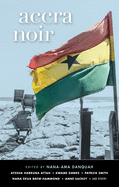
| Publisher: | Akashic Books | |
| Genre: | Collections & Anthologies, Mystery & Detective, Anthologies (multiple authors), International Crime & Mystery, Fiction, Noir | |
| ISBN: | 9781617758898 | |
| Pub Date: | December 2020 | |
| Price: | $16.95 |
| Starred | Mystery & Thriller |
by Nana-Ama Danquah, editor
"Accra is the perfect setting for noir fiction," writes Nana-Ama Danquah (Willow Weep for Me), Ghanaian American editor of this volume for Akashic Book's long-running Noir series. Hardly an endorsement for tourism, this spine-chilling 13-story collection offers an opportunity to "consider the context, beware of a pretext, search for a subtext" on living--and dying--in a major metropolis consumed by poverty and desperation.
Overlooked, underrepresented citizens exact their own due process in the opening and closing stories: the desperate literally feed the desperate in "Chop Money," and a woman punishes her ex-pat boyfriend--and his wife and children--in "Instant Justice." The powerful (mis)use their privilege in "Moon over Aburi," which reveals a policewoman who castrated a rapist, and "Tabilo Wuɔfɔ," in which a PTSD-addled former soldier commits horrific violence. Corpses divulge their own murders in "Shape-Shifters" and "The Boy Who Wasn't There." Infidelity turns fatal as a woman listens to one lover kill another in "Fantasia in Fans and Flat Screens"; a philanderer inspires poisonous revenge in "Intentional Consequences"; a suspicious husband kills in "When a Man Loves a Woman." "Trust No One" surely could be subtitles for "The Driver" who victimizes a pair of twins; "The Labadi Sunshine Bar," where youth usurps experience; "Kweku's House," in which the elderly suffer; and "The Situation," in which best friends lose all to a shared lover.
"Much like Accra, these stories are not always what they seem," Danquah warns. Interestingly, her literary roster includes an Irish ex-pat and a Parisian journalist. While an overwhelming bleak impression of Accra looms, the Ghanaian capital's inhabitants haunt long after the final page. --Terry Hong, Smithsonian BookDragon
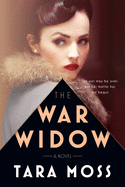
| Publisher: | Dutton | |
| Genre: | Mystery & Detective, Suspense, Thrillers, Fiction, Historical, Women Sleuths, World War II | |
| ISBN: | 9780593182659 | |
| Pub Date: | December 2020 | |
| Price: | $26 |
| Starred | Mystery & Thriller |
by Tara Moss
The War Widow launches Australian author Tara Moss's (The Fictional Woman) series starring journalist Billie Walker. World War II has been over for a year, but even in Australia, its economic and psychological effects are still being felt. Billie is reeling from the disappearance of her photographer husband, Jack, in the final months of the war. To distract her from her grief and pay the rent, Billie has reopened her late father's investigative agency (much to her baroness mother's chagrin).
Moss describes Billie's world meticulously, paying special attention to clothes (both Billie's homemade couture and her clients' sartorial habits). She tracks Billie's movements across Sydney as she searches for Adin Brown, a missing teenage boy whose mysterious connection to an upscale auction house may hold the clue to his disappearance. With the help of her assistant, Sam, an enigmatic war veteran, Billie begins to unravel a case that points to not only Adin's kidnapping but also theft, Nazi war crimes and the possible abduction of several Aboriginal girls. Billie's love for fast cars and red lipstick calls to mind the classic tropes of film noir, while the contrast between Sydney's glittering nightclubs and an isolated homestead in the bush highlights the secrets hidden by people who fought on both sides of the war. With a plot that races against time and a heroine who thinks nothing of strapping a Colt to her lace garter, Billie's first case is a satisfying setup for her future exploits. --Katie Noah Gibson, blogger at Cakes, Tea and Dreams
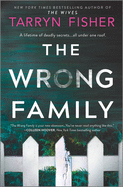
| Publisher: | Graydon House | |
| Genre: | Psychological, Domestic, Suspense, Thrillers, Fiction | |
| ISBN: | 9781525806377 | |
| Pub Date: | December 2020 | |
| Price: | $28.99 |
| Mystery & Thriller |
by Tarryn Fisher
When Juno Holland semi-accidentally winds up locked in the Seattle home of Winnie and Nigel Crouch while trespassing, she decides to take advantage of the opportunity to help them secretly. At 67, Juno has few pleasures left in life. Seriously ill and homeless after losing her family and her counseling practice, she wants to do some good before she dies. In The Wrong Family, Tarryn Fisher (The Wives) takes the unreliable narrator theme to a fascinating place as readers experience the Crouches, their teen son and extended family through Juno's damaged mind.
Nigel and Winnie are obviously at odds. As Juno overhears their late-night fights and accusations from her hidey hole, her curiosity and inner therapist begin to get the best of her. Confined to the house by the alarm system during the day, her food and drink forages expand to include snooping in drawers and on the computer. What she finds convinces her there are past wrongs that need to be set right--by any means necessary.
Fisher deftly weaves Winnie's experiences with Juno's, providing another viewpoint that keeps the puzzle pieces turning, searching for the sweet spot of the truth. The "perfect" life Winnie has cultivated can't erase the horrible thing she did that keeps her and Nigel forever bound yet separated by an emotional chasm. Unknown to Juno, Winnie's entire family is a powder keg; unknown to Winnie, Juno is working to bring the past into light. The combination makes for an explosive conclusion as the pieces fall into place. --Lauren O'Brien of Malcolm Avenue Review
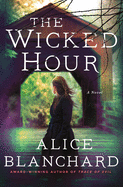
| Publisher: | Minotaur | |
| Genre: | Police Procedural, Mystery & Detective, Fiction, Women Sleuths | |
| ISBN: | 9781250205735 | |
| Pub Date: | December 2020 | |
| Price: | $26.99 |
| Mystery & Thriller |
by Alice Blanchard
The rural community of Burning Lake celebrates Halloween as a major holiday, and throngs of visitors flock to the upstate New York town's annual festival that capitalizes on the fascination with the public execution of several young women accused of being witches centuries ago. This collision of history's effect on contemporary life enhances the suspense in Alice Blanchard's gripping police procedural The Wicked Hour.
Police detective Natalie Lockhart and her fellow cops are used to drunken costumed revelers, tourists sleeping it off on sidewalks and so much trash that it takes days to clean up the town nestled in the Adirondack Mountains. But they don't expect to find the nude body of a young woman lying in a dumpster. The woman, who has an unusual tattoo and a callus under her chin, turns out to be Morgan Chambers, who had performed in the Halloween music festival, hoping to be discovered by a record producer who was supposed to attend. The 24-year-old was a violin student at a local music conservatory, from which another young woman violinist had disappeared the year before. The investigation stirs memories of Natalie's best friend, violinist Bella Striver, who allegedly left town on their high school graduation night.
This second entry in Blanchard's series weaves into the investigation a solid character study of Natalie, a shrewd detective whose anxieties, grief and guilt about her missing friend and her family's history rule her actions. Readers will better understand The Wicked Hour plot by starting with the series' first novel, Trace of Evil, which establishes Natalie's motives. A forceful look at a small town haunted by its past violence elevates The Wicked Hour. --Oline H. Cogdill, freelance reviewer
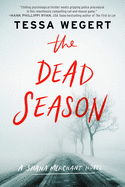
| Publisher: | Berkley | |
| Genre: | Police Procedural, Mystery & Detective, Traditional, Fiction, Women Sleuths | |
| ISBN: | 9780593097915 | |
| Pub Date: | December 2020 | |
| Price: | $17 |
| Mystery & Thriller |
by Tessa Wegert
Early on in The Dead Season, Shana Merchant, senior investigator for upstate New York's Bureau of Criminal Investigation, is called "the badass who solved the bloodiest case these parts have seen in years." She's also three weeks into a suspension, her fitness-for-duty psych evaluation imminent. As readers of Tessa Wegert's equally absorbing Death in the Family know, the previous year, Shana was held hostage by serial killer Blake Bram, who is still at large, and she's far from over the experience.
Since she's on leave, Shana heads home to Swanton, Vt., as soon as her parents share some disturbing news: the bones of her ne'er-do-well uncle have just been discovered in a local wildlife refuge. The police estimate that the man has been dead for two decades, which corresponds with the time that he left his wife and kids for a new life in Philadelphia. (Or so they thought.) While in Swanton, Shana gets word of a horrific new crime back in upstate that she knows Bram is behind.
Readers who can accept Shana's decision to withhold her personal relationship to Bram from her colleagues will find her quite redoubtable as she sets out to solve two crimes; she may recall Laura Lippman's Tess Monaghan, among other unrepentant female investigators from modern crime fiction. Shana, who narrates The Dead Season, admits that "the fact that I'd worked the case on Tern Island while still wrestling with PTSD was irresponsible on every level," but that doesn't mean she's sorry she did it. --Nell Beram, author and freelance writer
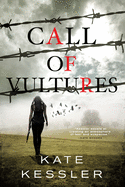
| Publisher: | Redhook | |
| Genre: | Mystery & Detective, Amateur Sleuth, Crime, Suspense, Thrillers, Fiction, Women Sleuths | |
| ISBN: | 9780316454261 | |
| Pub Date: | December 2020 | |
| Price: | $16.99 |
| Mystery & Thriller |
by Kate Kessler
The FBI is planning a takedown of a drug and sex trafficking cult masquerading as a self-help institution. Before the feds can execute the plan, ex-convict and MMA fighter Killian Delaney is hired to get two cult members out of harm's way. This sets in motion the twisty thriller Call of Vultures, Kate Kessler's sequel to Seven Crows.
Since her release from prison, Killian has been working for a secretive vigilante organization called The Initiative. On paper, Killian's job description is security consultant with a global company known as New Amsterdam Security, which keeps Killian's parole officer happy. Killian's freedom is threatened when Raven, an old cellmate, comes to visit. The daughters of Raven's girlfriend are trapped in the cult the FBI is about to take down. There's a hefty paycheck, and a personal debt will be paid in full if Killian can get the girls away from the cult before the raid. Taking on the mission might violate the terms of her parole, but time is running out for the sisters, and Killian risks it all--even her life--to save them.
Killian is an angry person who'd rather throw a punch than discuss her feelings, but Kessler provides enough character layering to show humans are complicated and not everyone fits into a box. Killian isn't afraid of anyone, even people she has no chance of beating, but the author goes past simple hardheadedness, revealing a softhearted side to Killian's intentions. At the heart of all the fist-flying action in Call of Vultures lies a soul-stirring universal mandate: always fight the good fight. --Paul Dinh-McCrillis, freelance reviewer
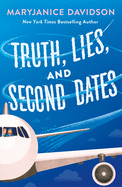
| Publisher: | St. Martin's Griffin | |
| Genre: | Romantic Comedy, Romance, Contemporary, Fiction | |
| ISBN: | 9781250053176 | |
| Pub Date: | December 2020 | |
| Price: | $16.99 |
| Romance |
by MaryJanice Davidson
MaryJanice Davidson (The Love Scam) writes romance across genres, from comedy to horror to paranormal. In Truth, Lies, and Second Dates, she incorporates elements of a thriller. Ava Capp is a snarky, flawed heroine with an unresolved past. Not yet 30 years old, Ava is already an accomplished pilot for a commercial airline. Her need to fly away began years before. As a teenager, she and her best friend, Danielle, were inseparable--until Danielle was brutally murdered when the girls were 16. The tragic loss of Danielle and her unsolved murder led Ava to abuse drugs and alcohol, until she dried out, turned her life around and became a pilot--one plagued with romantic commitment issues.
One day, on a routine flight, she crosses paths with Danielle's twin brother, Dennis, who invites Ava to a 10-year memorial service for his sister. The invitation brings Ava back to her hometown, Minneapolis, Minn., where she's welcomed coolly by Danielle's family--especially by her mother, who still suspects Ava killed her daughter. When things go dreadfully awry at the service, and Ava leaves abruptly, she meets Dr. Tom Baker. When Baker was 13, the grisly murder of Danielle intrigued him so much that it launched him into a career as a medical examiner. As Ava and Tom strike up a friendship (on the way to romance), mysterious happenings resurrect the past and begin to threaten Ava's sanity and safety.
Readers will root for the flawed heroine and the pull of romance. However, they'll be more apt to keep turning pages, eager to solve the suspenseful whodunnit embroiled in the midst of it all. --Kathleen Gerard, blogger at Reading Between the Lines
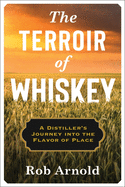
| Publisher: | Columbia University Press | |
| Genre: | Technology & Engineering, American - General, Cooking, Alcoholic- General, Food Science, Chemistry & Biotechnology, Alcoholic - Bartending & Cocktails, Agriculture, Agronomy - General, Regional & Ethnic, Beverages | |
| ISBN: | 9780231194587 | |
| Pub Date: | December 2020 | |
| Price: | $27.95 |
| Food & Wine |
by Rob Arnold
"Terroir" is a "somewhat controversial concept with an unsettled definition." It is essentially a French descriptor for how crop flavors are influenced by the environment (soil layers, topography, climate, etc.). As master distiller at Firestone & Robertson Distilling Co., maker of the TX Whiskey brand, Rob Arnold is spellbound by terroir. And Arnold himself is a study in terroir--almost all of his mother's side of the family worked in bourbon.
Arnold undertook a years-long process to educate himself about how environment affects product, ultimately writing a Ph.D. dissertation for Texas A&M's plant-breeding program on "how genetic and environmental forces influence corn-derived flavors in whiskey." In an industry that commonly uses co-op and commodity sales, TX Whiskey is one of a rising number of distillers sourcing grains from one farm to understand better environmental impact on flavor.
Arnold's thesis research forms the backbone of The Terroir of Whiskey, an in-depth look at crop growth, fermentation, distillation and aging of wine and whiskey. The wine industry--known for using terroir--was where Arnold began his immersive journey to show a correlation in whiskey. His world travel to wine and whiskey producers, discussions with makers, tastings, analyses and conclusions make for heady reading. Arnold smartly and capably writes for the distiller, educated taster and novice alike, breaking issues into lay language as necessary (even using Bugs Bunny, Daffy Duck and the Tasmanian Devil to explain). Arnold provides specifics for the reader to taste along with him, resulting in a full sensory educational experience. --Lauren O'Brien of Malcolm Avenue Review
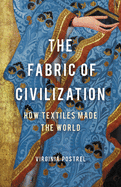
| Publisher: | Basic Books | |
| Genre: | Industries, Technology & Engineering, Textiles & Polymers, Fashion & Textile Industry, Ancient, Business & Economics, General, History, World, Byzantine Empire, Western Europe | |
| ISBN: | 9781541617605 | |
| Pub Date: | November 2020 | |
| Price: | $30 |
| History |
by Virginia Postrel
In The Fabric of Civilization: How Textiles Made the World, Virginia Postrel (The Power of Glamor) convincingly argues that textiles have played a central role in the histories of technology, commerce and civilization itself.
The Fabric of Civilization is a story of innovation--or, more accurately, a series of stories. Postrel describes innovations in the creation of textiles, from the game-changing discovery of string in the Stone Age to current efforts to engineer "smart textiles." She explains the fundamental principles of spinning and weaving, and the unexpected relationship between weaving and binary code. She considers how changes in textile manufacturing shaped the larger world, including the textile mills that sparked the Industrial Revolution and the search for better dyes that created the modern chemical industry. Furthermore, she looks at the development of information technologies as a result of long-distance textile trades: business letters in ancient Assyria, regular mail service in medieval Italy, double-entry bookkeeping in Renaissance Italy, the roots of modern banking in the need for international credit arrangements in the early modern era.
Postrel never loses sight of the people in her story. A woman weaver in ancient Assyria responding to changing market demands, the teenaged Niccolo Machiavelli mastering the "new math" of Hindu-Arabic numerals, paleoanthropologists reproducing prehistoric fibers, and modern textile chemists and engineers all play a role.
Combining exhaustive research with an accessible writing style, The Fabric of Civilization will appeal to both fans of micro-histories and to textile junkies interested in the history of their passion. --Pamela Toler, blogging at History in the Margins
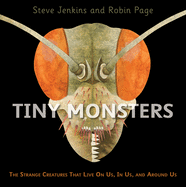
| Publisher: | HMH Books for Young Readers | |
| Genre: | Environmental Science & Ecosystems, Animals, Insects, Spiders, etc., Science & Nature, Juvenile Nonfiction | |
| ISBN: | 9780358307112 | |
| Pub Date: | November 2020 | |
| Price: | $17.99 |
| Starred | Children's & Young Adult |
by Steve Jenkins, Robin Page
The husband-and-wife writing team that brought young readers the Caldecott Honor book What Do You Do with a Tail Like This? delves into the creepy crawly world of arthropods (specifically insects, mites and spiders) in the fascinating Tiny Monsters. Steve Jenkins and Robin Page explore how these minute critters co-exist in our environment using fun facts, bold illustrations and size comparisons to drive home the minuscule stature of their subjects.
Some of the tiny monsters live outdoors, like the South American jumping ant that "has the largest eyes of any ant relative to its body size"; others can be found in human homes, like the dust mite. Some creatures, such as the harmless eyelash mite, exist on humans; yet more live in humans, like the pork tapeworm, which "feeds by attaching itself to the intestines of its host... [and] can cause serious health problems."
Jenkins and Page keep their audience riveted with shiver- and itch-inducing pages and fascinating trivia: the tardigrade "can live for 30 years without eating or drinking"; the marine scale worm lives near "volcanic vents on the sea floor." Meanwhile, the cut- and torn-paper collage illustrations highlight creatures that, when enlarged to a visible size, are more intriguing than sinister--the wonderful detail simply demands a thorough and close inspection. Jenkins and Page erase a lot of the creepy from this crawly world by helping their audience to understand the little critters with whom coexistence is a fact of life. With a bibliography and "more tiny monster facts" included at book's end, readers may never look at their surroundings the in the same way again. --Jen Forbus, freelancer
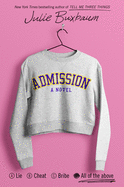
| Publisher: | Delacorte Press | |
| Genre: | Class Differences, School & Education, College & University, Parents, Family, Social Themes, Young Adult Fiction | |
| ISBN: | 9781984893628 | |
| Pub Date: | December 2020 | |
| Price: | $18.99 |
| Children's & Young Adult |
by Julie Buxbaum
This dramatic fictional celebrity tell-all is a lesson in privilege, complicity and integrity.
"Nothing bad has ever really happened" to 17-year-old Chloe Berringer. She attends "the best private school in Los Angeles," has been accepted to one of her reach colleges--even though she's in the bottom half of her class--and is attending prom with the boy she's had a years-long crush on. When the FBI shows up at her house, she thinks it's a gag. But it's no joke when her sitcom-starring mom is arrested on "multiple fraud charges in [a] countrywide college admissions scandal." As Chloe sorts out her role in the incident, she loses "everything," including her college acceptance and friends. Now Chloe must come to terms with her guilt and reconcile what's worse: the act or complicity in it.
In the ripped-from-the-headlines Admission, Julie Buxbaum (Hope and Other Punchlines) uses the 2019 Varsity Blues admission scandal to discuss white privilege and white people's complicity. Whether it's Chloe's microaggressions toward her Nigerian American best friend ("Maybe you guys should move to a better school district") or the legal ways Chloe's family has worked the system ("I had tutors and specialists and advisors"), Buxbaum shows how ingrained white privilege is in our society, as well as its effects on Black people. Dual timelines that alternate narration between "Now" and "Then" move the story along quickly and help facilitate a discussion about complicity as readers consider Chloe's role in the events that led up to her mother's arrest. This thought-provoking and compelling story proves being "aggressively oblivious" can no longer be the status quo. --Lana Barnes, freelance reviewer and proofreader